Results 11,171 to 11,180 of 12091
Thread: Anandtech News
-
06-14-21, 06:08 PM #11171
Anandtech: Razer Unleashes Blade 14 Gaming Laptop: Ryzen 5000 Mobile with GeForce Gra
During their E3 2021 gaming event this afternoon, Razer has launched the latest variant of its popular Blade 14 gaming laptop. For the first time, Razer is using an AMD processor to power its latest Blade 14 thin gaming laptop. Marking a milestone within the company, the Razer Blade includes plenty of features, including Wi-Fi 6E, dual USB 3.2 G2 Type-C, and multiple options with NVIDIA's GeForce RTX graphics for fine-tuning the laptop's portable gaming performance.
Back in 2011, when Razer first entered the gaming laptop market, the competition between Intel and AMD in the desktop and mobile space wasn't like it is now. Since then, a lot has changed with the emergence of AMD's Ryzen architecture, and at present, it is doing very well. With Ryzen Mobile offering powerful performance and in January, it launched its Ryzen 5000 Mobile parts at CES 2021.
With Razer commanding a niche market in the laptop space with all of its models designed for gaming, the latest Razer Blade 14 comes equipped with AMD's Ryzen 9 5900HX processor, with eight cores, sixteen threads, a maximum boost clock speed of 4.6 GHz, and is unlocked allowing users to apply overclocks. While the Blade 14 isn't an 'AMD Advantage' system benefiting from both AMD processor and graphics, it marks a big step for a brand typically associated specifically with Intel chips.
The AMD Ryzen powered Razer Blade 14 comes with two choices in regards to panel type. This includes the option of a 1080p 144 Hz 100% sRGB display, or a more premium 1440p 165 Hz 100% DCI-P3 display. Both panels are IPS-based and come with variable refresh rate support. For storage, the Razer Blade 14 includes a 1 TB PCIe 3.0 x4 NVMe SSD, while memory comes in the form of 16 GB of DDR4-3200. Unfortunately for buyers looking at later-life upgrades, the memory is fixed onto the motherboard, so 16 GB is all it ever will have.
Buyers can select between three NVIDIA options in terms of graphics. This includes a GeForce RTX 3060 mobile GPU with 6 GB of VRAM, an RTX 3070 with 8 GB of VRAM, or an RTX 3080 also with 8 GB of VRAM. All three models have their GPUs set to 100 W TGP (total graphics power). Keeping the components cool is a vapor chamber cooling solution, and Razer is advertising up to 12-hours battery life and comes with a compact 230 W power adapter.
Razer is also touting the Blade 14 as the world's thinnest gaming laptop, and the dimensions make it rather sleek indeed. It's 16.8 mm thick, with a 220 mm x 319.7 mm footprint. Although Razer didn't provide us with details on the weight, the frame itself is custom CNC milled from a single block of T6 grade aluminum, commonly used for aircraft parts, and comes with a matte black anodized finish. Other design aspects include per-RGB backlit keys powered by Razer Chroma and features an N-Key rollover keyboard. The keys themselves have a 1 mm actuation, and keys can be programmed via Razer Synapse 3. Also included is a large glass precision trackpad, which is Windows Precision-capable and adapts to usage and can respond to multiple finger gestures.
I/O connectivity include two USB 3.2 G2 Type-C ports with DP alt-mode and 100 W charging capabilities, two USB 3.2 G2 Type-A ports, one HDMI 2.1 video output, and a single 3.5 mm combo audio port. Along the top of the bezel is a Windows Hello 720p webcam and comes with THX-certified Spatial Audio with two premium speakers. The Blade 14 also comes with a Kensington lock for security on the go.
The AMD Ryzen 5900HX powered Razer Blade 14 will start shipping from June 14th, with prices starting at $1799.
Gallery: Razer Unleashes Blade 14, 14" Powered By Ryzen 5000 & RTX Graphics Gaming - 4_thumb.jpg)
 - 1_thumb.jpg)
 - 10_575px_thumb.jpg)
 - 11_575px_thumb.jpg)
 - 12_575px_thumb.jpg)
 - 13_575px_thumb.jpg)
Related Reading- AMD Launches Ryzen 5000 Mobile: Zen 3 and Cezanne for Notebooks
- AMD Ryzen Pro 5000 Mobile: Zen 3 comes to Commercial Notebooks
- AMD Ryzen 9 5980HS Cezanne Review: Ryzen 5000 Mobile Tested
- CES 2021: ASUS Unveils ROG Strix Scar 15 Gaming Laptop, Ryzen 5000 Mobile
More...
-
06-14-21, 08:30 PM #11172
Anandtech: Razer Announces Ultra-Compact "Razer GaN" 130W USB Type-C Charger
Alongside their new AMD-powered Blade 14 laptop, Razer today also used E3 2021 to announce a new, high-powered USB-C charger. The Razer GaN USB Type-C charger is a compact charging solution that is pocket-sized and can deliver up to 130 W of combined charging power across its two USB-C and two USB-A outputs.
If you've ever owned one of the latest smartphones or Bluetooth 5.1 devices, it's likely to come with a USB Type-C charging port. The Type-C connector has become more popular as more and more powered devices come with Type-C. With the USB-IF announcing its specifications for the new USB-PD standard with support for up to 240 W, power supply engineers are increasingly using Gallium Nitride (GaN) semiconductors for more efficient and compact designs.
GaN by name and GaN by nature, the Razer GaN is powered by using Gallium Nitride, which has allowed Razer to cut down on the size of the charger. Razer claims that their GaN charger is small enough to fit inside a pocket, measuring 7.7 x 3.2 x 6.2 mm (W x D x H) in size with a weight of 349 g. Looking at the aesthetics, the GaN includes a black plastic chassis with Razer's trademark green accent color being used in the USB Type-A ports as well as the power indicator light. And in case you're still not sure who made it, there's a Razer logo embossed onto the side as well.
The Razer GaN has a foldable fork for plugging directly into a plug socket and comes supplied with global power adapters. Users can charge devices in regions such as North America, Europe, the UK, and Asia. Also included in the accessories is a 2 meter USB cable, although Razer didn't specify Type-C or Type-A.
In terms of charging ports, the Razer GaN has two Type-C outputs and two Type-A outputs. Each pair of outputs are on a shared power plane, allowing the charger to power several devices at once, though at a reduced rate if used with multiple high-powered devices. This works out to the two Type-C ports sharing 100 W of capacity, while the two Type-A ports share another 18 W. And since this is a universal power supply, the Razer GaN can charge everything from phone and tablets to Razer Blade laptops, Apple MacBooks, as well as smartwatches and Windows laptops that support Type-C charging.
The Razer GaN USB Type-C 130 W charger can be pre-ordered at the Razer Store from the 14th of June, with shipping of stock expected within 30 days of the date. Though don't mistake the diminutive size of the charger for a diminutive price tag; the charger carries an MSRP of $180.Razer GaN Charger Max Port Power Max Group Power Max Charger Power USB-C #1 100W 100W 130W USB-C #2 100W USB-A #1 18W 18W USB-A #2 18W
Gallery: Razer Announces GaN USB Type-C Charger, Up to 130 W


_thumb.jpg)
_thumb.jpg)
_thumb.jpg)
More...
-
06-15-21, 08:24 AM #11173
Anandtech: SPEC Updates SERT Suite for ISO-Compliant Server Energy Efficiency Benchma
The Standard Performance Evaluation Corporation's SPEC SERT Suite has evolved as the industry-standard for measuring the energy efficiency of servers over the last decade. Regulatory authorities such as the U.S EPA and Japan's METI are some of the many who have adopted the suite to determine thresholds for various energy-efficiency programs.
In August 2020, the International Organization for Standardization (ISO) published the ISO/IEC 21836:2020 standard to specify the measurement methodology for assessment and reporting of a server's energy efficiency. Today, SPEC is announcing SERT Suite 2.0.4, an update to enable its incorporation into the ISO standard. It must be noted that the SERT suite was already compliant with ISO 21836. The new version also brings in ISO compliance report links. In addition to including latest PTDaemon software (v1.9.2) that interfaces with SPEC-approved power analyzers and temperature sensors, and GUI optimizations, the SPEC SERT Suite 2.0.4 also supports servers based on the latest ARM processors from Ampere, Fujitsu, and Marvell.
The SERT 2.0.4 suite is priced at USD 2800, and is available for immediate download. Being a minor version update, it is free for SERT 2 licensees to upgrade. Similar to all other benchmarks developed by SPEC, the SERT Suite from the SPECpower Committee has been developed in a vendor-agnostic manner with representatives from across the industry. Needless to say, this greatly increases the credibility of the benchmark. The SERT Suite allows consumers / cloud service providers to determine the energy efficiency (and, the TCO indirectly) of a particular offering for their workloads. The latest offering keeps up with the evolving industry requirements.
More...
-
-
06-17-21, 12:14 PM #11175
Anandtech: An AnandTech Interview with Jim Keller: 'The Laziest Person at Tesla'
I've spoken about Jim Keller many times on AnandTech. In the world of semiconductor design, his name draws attention, simply by the number of large successful projects he has worked on, or led, that have created billions of dollars of revenue for those respective companies. His career spans DEC, AMD, SiByte, Broadcom, PA Semi, Apple, AMD (again), Tesla, Intel, and now he is at Tenstorrent as CTO, developing the next generation of scalable AI hardware. Jim's work ethic has often been described as 'enjoying a challenge', and over the years when I've spoken to him, he always wants to make sure that what he is doing is important in the global context. Today we're publishing a transcript of a recent chat with Jim, now five months into his role at Tenstorrent, but moreso to talk about Jim the person, rather than simply Jim the engineer.
More...
-
06-17-21, 12:14 PM #11176
Anandtech: Google Announces AMD Milan-based Cloud Instances - Out with SMT vCPUs?
Today Google is announcing a new Cloud instance based on AMD Milan – but beyond the new hardware, it’s really what’s behind the new performance numbers which is what should shake the cloud system – is Google abandoning SMT vCPUs?
More...
-
06-18-21, 02:23 PM #11177
Anandtech: DIY on Intel Ice Lake Xeon Just Got A Little Closer
Since the launch of Intel’s Third Generation Xeon Scalable Ice Lake processors in April, it was widely expected that the initial volumes of hardware would be going towards Intel’s biggest customers through their OEM partners. Users who want retail hardware would have to wait a while, although exactly how long was a bit of a mystery. The answer to this seems to be that Ice Lake Xeon hardware is now available at retail: both motherboards and a CPU or two.
More...
-
06-21-21, 09:13 AM #11178
Anandtech: Mobile Flagship Phone Cameras 2021 H1 Review: Megapixels & Telephotos
It’s been well over a year now since our last extensive camera round-up article, and it’s also been a few months now since the release of most of 2021’s flagship device releases, and it’s time to take a snapshot of the current smartphone photography landscape.
More...
-
06-22-21, 03:23 AM #11179
Anandtech: GlobalFoundries To Build New 450K Wafer-per-Year Fab in Singapore
Looking to capitalize on the ongoing chip crunch, GlobalFoundries this morning is announcing that the company is building a new chip fab in Singapore, with the groundbreaking taking place immediately. The unnamed fab will be joining the company’s existing cluster of fabs in Singapore, and once fully ramped up in late 2023, will be capable of processing 450K 300mm wafers per year. The fab is the first of a larger, three phase plan for the foundry, which with investments from customers and the Singapore government, will be spending $4 billion to construct the new fab.
Like the rest of the chip lithography industry, GlobalFoundries is currently enjoying a booming market where they can’t make chips fast enough to satisfy customer demand. Even with multiple fabs located in Singapore, Dresden, and the US, the company is running at capacity and could be selling more chips if they could make them. To that end, the company is preparing to make the first of several planned capacity expansions, starting with its fab cluster in Singapore.
Keeping in line with GlobalFoundries’ pivot towards more specialized processes for specific classes of chips, the new fab is going to be focused on larger process nodes. GloFo is principally investing in capacity for their automotive, 5G mobility and secure device customers, which means adding capacity for their 55nm BiCMOS process for RF, as well as their 40nm processes for embedded memory and RF. A small part of the fab’s capacity is also being set aside for 90nm. And, since this fab is being built with modern tools, the company is being quick to emphasize that these allocations aren’t static, and that many of their tools are fungible, allowing them to be moved between different lines as dictated by demand.
Owing to the unique processes being employed and the overall chip crunch – which even after it diminishes isn’t expected to fully abate any time soon – GloFo is fast-tracking the development of this new fab. With construction already underway (and the formal groundbreaking set for today), the company expects the fab to produce its first commercial wafers in early 2023, only around 18 months from now. And by the time the fab is fully ramped up at the end of 2023, the 250,000 square feet of clean room space will be capable of processing 450K wafers per year (~38K/month). Overall, this marks a nearly 50% increase in GloFo Singapore’s capacity, bringing the total capacity for operations there to 1.5M 300mm wafers per year.
Funding for the $4 billion fab, in turn, is coming from a few sources. According to GlobalFoundries, part of the funding for the fab is coming directly from customers, who are pre-paying for the capacity. As well, Singapore’s Economic Development Board is being listed as a partner. And finally, with GlobalFoundries easily turning a profit, the company has much easier access to loans and other forms of borrowing than it has in previous years.
Overall, this marks the next step in an important turnaround for the contract fab, which was spun-off from AMD almost 13 years ago. Though GlobalFoundries’ plans to compete as a bleeding-edge fab eventually fell to the wayside thanks to the ever-increasing costs of R&D, the company has found a new role as a large-scale provider of older and more specialized manufacturing processes. As a result, GloFo is finally a financially successful chip fab, and with that success comes the need to expand. Once finished, the new Singapore fab will be the first brand-new (and not acquired) fab to be built by the company in several years.
Meanwhile, Singapore is just the first of several planned additions for the contract chip fab. Mindful of the current political climate and every major nation’s desire to secure local chip manufacturing capacity, the company is aiming to expand capacity in all three of its fab sites, ideally splitting capacity equally between Singapore, the US, and Dresden. Singapore, in turn, has become the first major expansion on the basis of need – it’s the oldest fab complex and the first to run out of room – but it won’t be the last. GloFo is already in the middle of its previously-announced $1.4B capacity expansion across all of its sites, and the company wants to invest upwards of 6 billion dollars more over the next couple of years. So, as GlobalFoundries’ fortunes continue to rise, so will the additional fab capacity needed to support the company.
More...
-
06-22-21, 04:16 AM #11180
Anandtech: AMD Moves GCN 1, 2, & 3-based GPUs and APUs To Legacy; Also Drops Win7 Sup
Alongside today’s release of their new Radeon Software Adrenalin 21.6.1 driver – the first to bring support for FidelityFX Super Resolution tech – AMD is also using this opportunity to clean house on supported graphics products. As announced in a new blog post and effective immediately, AMD is moving all of its 1st, 2nd, and 3rd generation Graphics Core Next (GCN) based GPUs and APUs to legacy status. As a result, pre-RX 400 series video cards and pre-Ryzen APUs are no longer supported by AMD’s current drivers, and AMD’s previous 12.5.2 driver set will be the final release for those products. 12.5.2 will also be the final driver that supports Windows 7, as AMD is also using this opportunity to drop support for that already-retired OS.
This week’s change in support marks the first time since 2015 that AMD has moved any video hardware to legacy support. At the time, the company retired its pre-GCN hardware, leaving AMD’s GCN-based Radeon HD 7000 series and newer products as their support baseline. And, after nearly 10 years of support for the oldest pieces of GCN hardware – the then-revolutionary Radeon HD 7970 was launched at the very start of 2012 – AMD is finally winding down support for the first couple of waves of GCN hardware.
First introduced in 2011, GCN was a major overhaul of AMD’s graphics architecture, moving from an ILP-centric design to a more modern and compute-friendly TLP-centric design. GCN itself has since been supplanted by the RDNA family, but many of the basic design principles of GCN are still alive today in AMD’s enterprise compute-focused CDNA architecture.
As for this week’s product support changes, AMD is essentially retiring all graphics hardware – GPU and APU – that pre-dates 2016’s Polaris (GCN 4) architecture. Consequently, AMD’s lengthy legacy list includes the Radeon 7000 and 8000 series, as well as the 200, 300, and Fury series. Even a few pieces of mobile-focused M400 hardware are on there, since those low-end parts were based on older GCN chips. Overall, this marks a roughly 5-year span of hardware being retired this week, with the youngest parts just turning 5.
On the APU front, the legacy list includes several of AMD’s popular pre-Ryzen APUs, including Bristol Ridge, Carrizo, and Kaveri, which were predominantly sold under the AMD A-series moniker (e.g. A10-9700). It’s worth noting that the resulting support window for these products does end up being a bit shorter than the discrete GPUs, since AMD didn’t release their first Ryzen + Vega APUs until 2018.
As things stand, I’m not surprised to see AMD lump together GCN 1/2/3 from a driver support standpoint. Despite some very material architecture tweaks among those successive generations, from a product development standpoint they all represent one extended product family, as AMD introduced and replaced GPUs in a piecemeal fashion. Combined with the fact that AMD continued using early GCN parts in newer cards for years, it wasn’t until Polaris in 2016 that AMD finally executed a complete top-to-bottom refresh of its entire GPU product stack. In other words, GCN 1/2/3 are being retired in the same way they lived: together.The Dearly Departed Desktop Mobile AMD A-Series APUs with Radeon R4, R5, R6, or R7 Graphics AMD A-Series PRO processors with Radeon Graphics AMD Pro A-Series APUs with Radeon R5 or R7 Graphics AMD FX-Series APUs with Radeon R7 Graphics AMD Athlon Series APUs with Radeon R3 Graphics AMD E-Series APUs with Radeon R2 Graphics AMD Sempron Series APUs with Radeon R3 Graphics AMD Radeon R7 M400 Series Graphics AMD Radeon R9 Fury Series, R9 Nano Series Graphics AMD Radeon R9 M300 Series Graphics AMD Radeon R9 300 Series Graphics AMD Radeon R7 M300 Series Graphics AMD Radeon R9 200 Series Graphics AMD Radeon R5 M300 Series Graphics AMD Radeon R7 300 Series Graphics AMD Radeon R9 M200 Series Graphics AMD Radeon R7 200 Series Graphics AMD Radeon R7 M200 Series Graphics AMD Radeon R5 300 Series Graphics AMD Radeon R5 M200 Series Graphics AMD Radeon R5 200 Series Graphics AMD Radeon HD 8500M - HD 8900M Series Graphics AMD Radeon HD 8500 - HD 8900 Series Graphics AMD Radeon HD 7700M - HD 7900M Series Graphics AMD Radeon HD 7700 - HD 7900 Series Graphics
Otherwise, as previously mentioned, AMD is also using this opportunity to retire support for their last pre-Windows 10 OS. Like most other hardware vendors, AMD had opted to continue developing drivers for Windows 7 even after the OS itself was retired at the start of 2020, owing to the fact that it was still seeing significant use in some locales. But, after another 18 months of extended support, Windows 7 support is also being dropped. As of today’s 12.6.1 drivers, the only versions of Windows supported are 64-bit editions of Windows 10.
For their part, AMD’s blog post on the retirement notes that “This change enables AMD to dedicate valuable engineering resources to developing new features and enhancements for graphics products based on our latest graphics architectures.” It’s also worth noting that this announcement comes less than 2 weeks after NVIDIA’s own legacy announcement, where the company announced that the similarly aged Kepler architecture will be moved to legacy status later this summer.
Closing out support for all these legacy products then will be AMD’s 12.5.2 driver. The company has posted a fresh “legacy” version of the driver just for these retired products, though it doesn’t look like there’s anything new versus AMD’s existing drivers. According to the company, there are no further driver released planned, and the announcement makes no mention of a security update support period.
Overall, AMD’s early GCN architecture parts marked an important transition for AMD, and the resulting hardware, for all of its merits and weaknesses, kept AMD in the game during a very tough period for the company. So for GCN 1, 2, and 3, this is a retirement that’s well-earned.
More...
Thread Information
Users Browsing this Thread
There are currently 26 users browsing this thread. (0 members and 26 guests)




 - 2_575px.jpg)
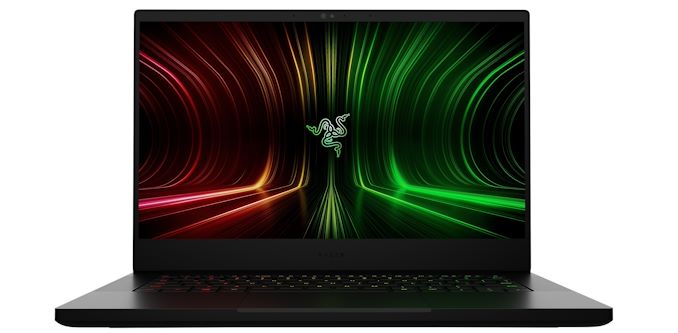
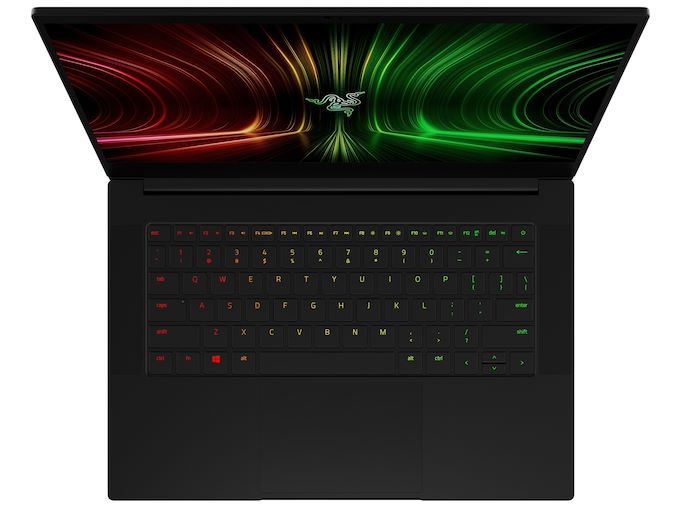


 Quote
Quote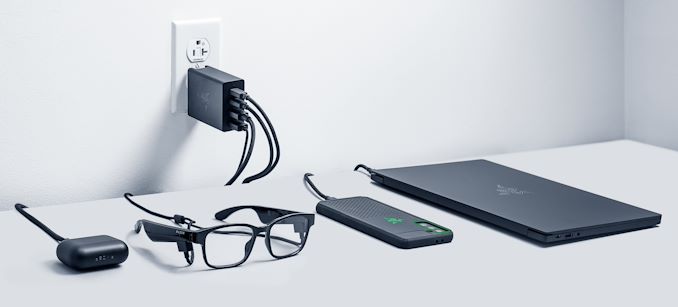
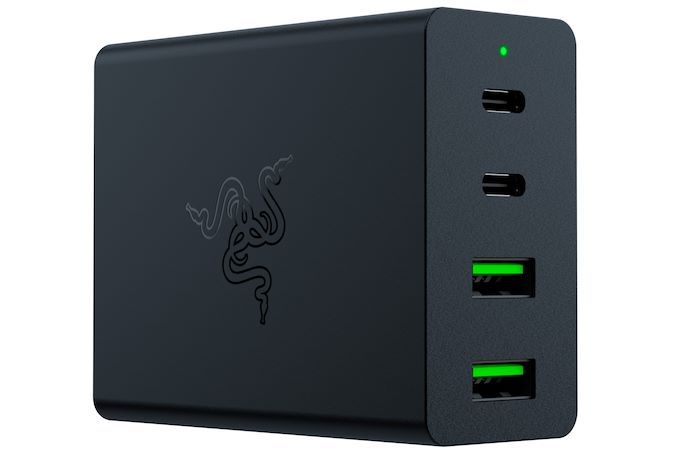

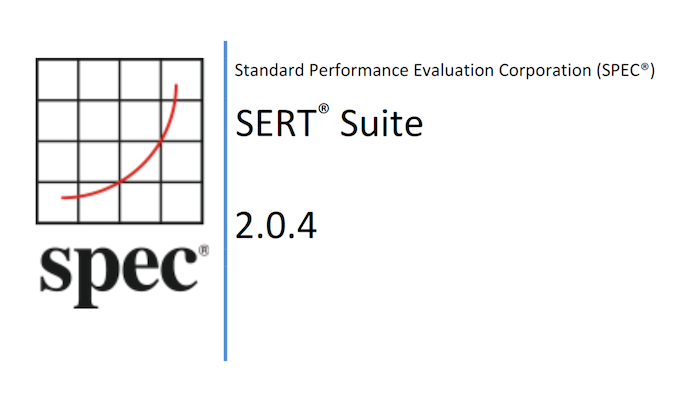
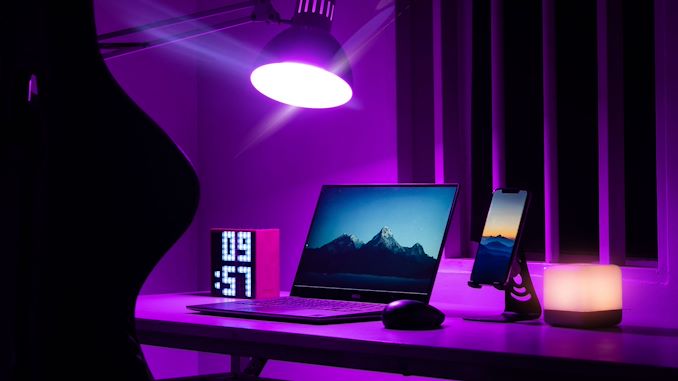

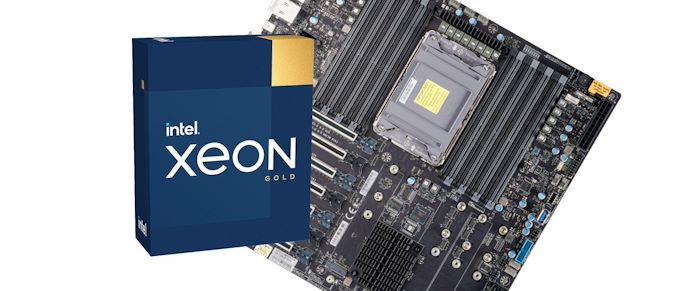

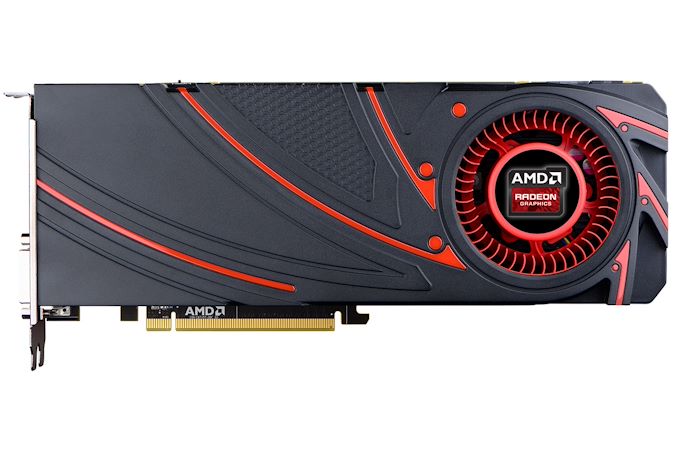
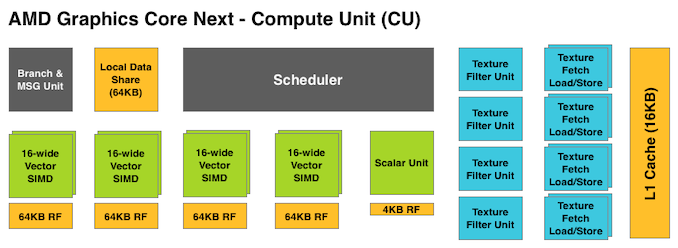
















Bookmarks